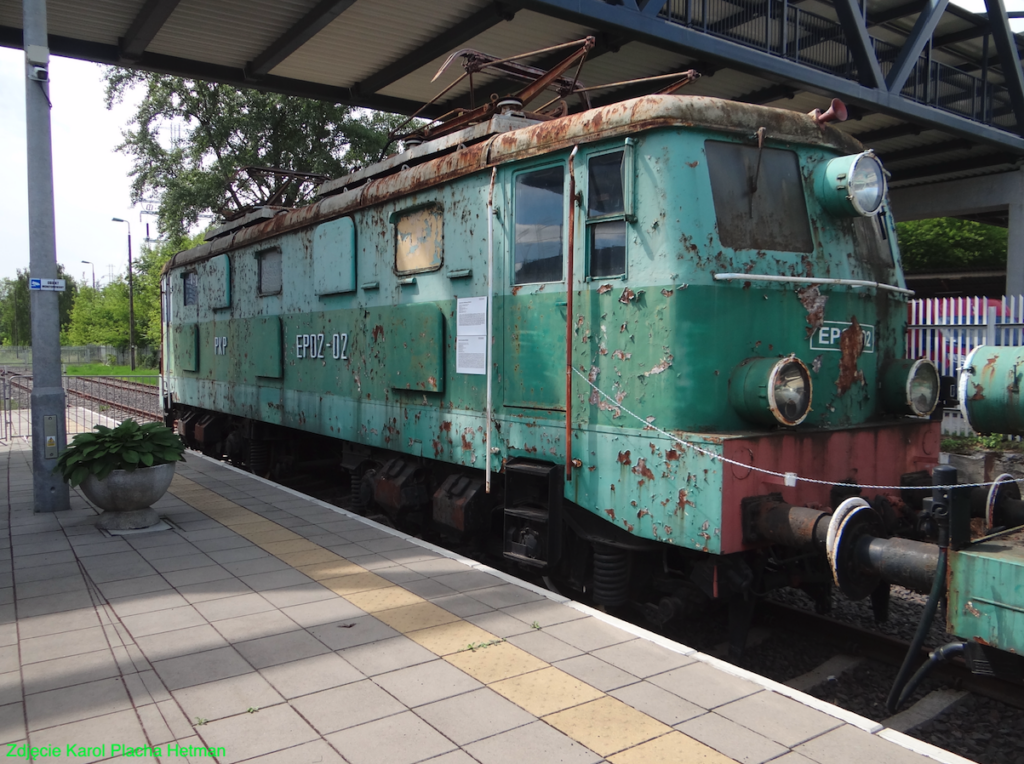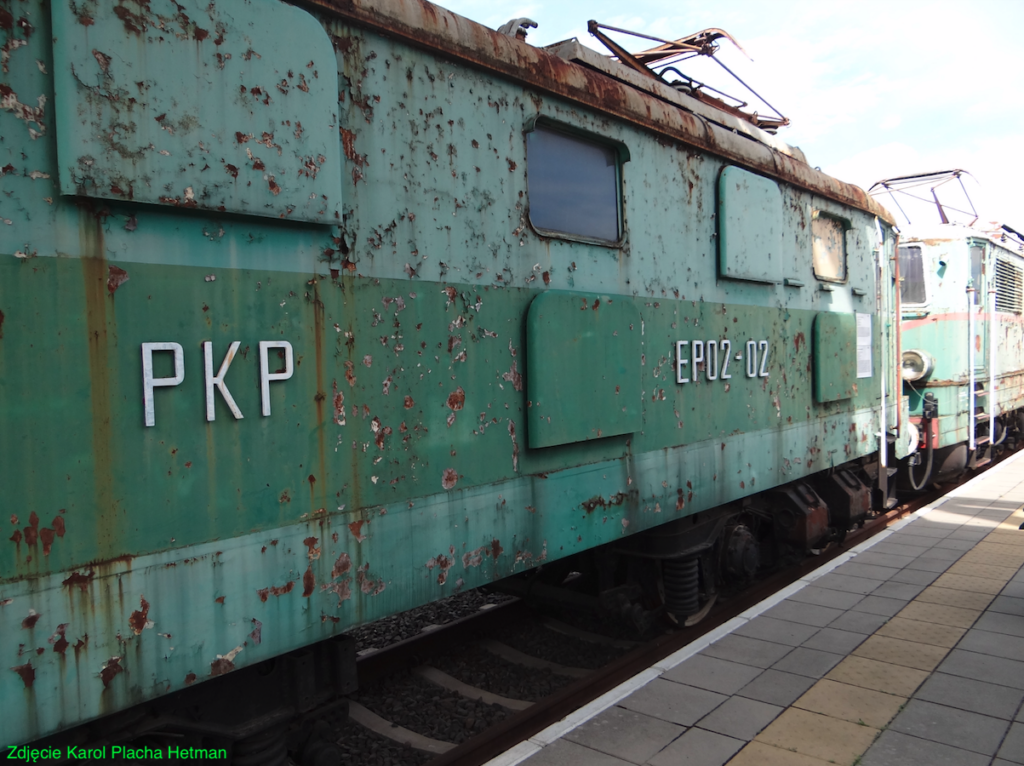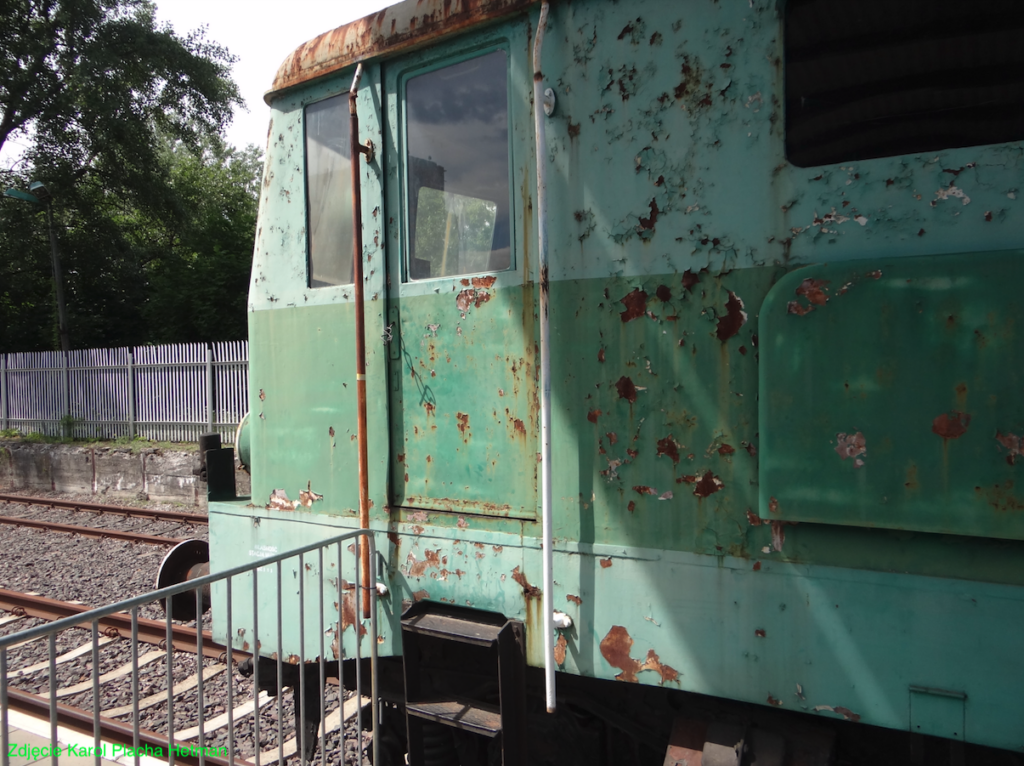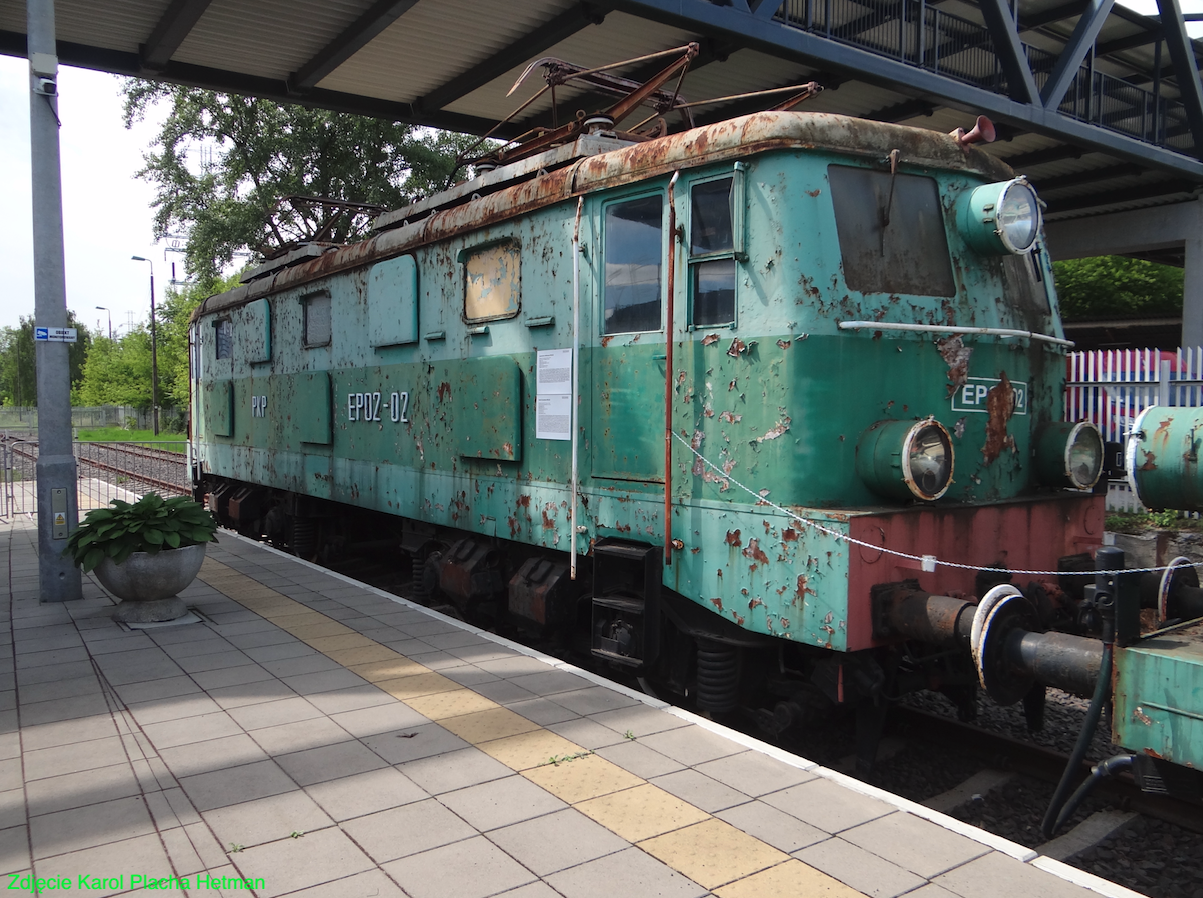Warszawa 14-06-2024
Electric locomotives in Poland.
The first electric locomotives in Poland began to be used in 1933, on a section of only 10 km, between Warszawa Wschodnia – Warszawa Zachodnia railway stations. These were locomotives of the EL.100 series, manufactured by Metropolitan-Vickers, obtained through Electrical Export, marked in PKP as type E01 and then EP01. Two locomotives were built in England, and the remaining four at the First Locomotive Factory in Poland Sp. Akces in Chrzanów. Production in Poland lasted from 1934 to 1936.
In 1937, it was assessed that the EP01 locomotives were too powerful for the tasks performed and therefore consumed too much electricity. Therefore, EL.200 locomotives were developed and their production began at the HCP Cegielski plant in Poznań. Further development of Polish electric locomotives was interrupted by the German army’s invasion of Poland on September 1, 1939. During the war, the small network of electrified lines at the Warsaw junction was completely destroyed and looted. Then the Germans rebuilt it on a section of the cross-city line, because steam locomotives in the tunnel caused heavy smoke, which made the operation of the route difficult.
EP02 Electric Locomotive.



After World War II, the devastated country struggled to recover from ruin. There are no operational electric locomotives left in Poland, except for five two-unit locomotives built on the basis of the E91 EMU. The concept of purchasing and building a new series of electric locomotives was developed by the Central Design Office of the Rolling Stock Industry (CBKPTK). In 1951, eight ASEA electric locomotives were purchased in Sweden, marked by PKP as type EP03.
In 1949, industrial cooperation with England was renewed and an agreement was signed with the “Contractors Committee for the Electrification of Polish Railways” representing the English industry. A contract was concluded for the supply of MV 185 R traction engines and other electrical equipment. These were devices of the class used before the war in the EP01 electric locomotive and in E91 trains.
In 1951, documentation for the new EP02 locomotive was developed at the Central Design Office of the Rolling Stock Industry in Poznań. The structure includes many modern design solutions that did not exist in the interwar period. The design of the box and soleplate has been changed compared to its predecessors. The sheets were joined by welding, not riveting. The headstocks with the pulling element and buffers were installed. The outline of the box is more streamlined. The bogies have a lighter, welded structure with a shorter wheelbase, which ensured better cooperation with the track. The wheel sets are supported on double-row rolling bearings.
Production began at the PaFaWag plant in Wrocław, and the factory designation was given to type 1E, and then changed to E110. The electrical equipment was purchased in England. The first EP02 locomotive was built in August 1953. The locomotive was sent for tests on electrified sections around Warsaw.
The first six locomotives were registered with the Polish State Railways in 1954, the seventh locomotive was introduced into service in 1956, and the last, eighth one, in 1957. The locomotives had factory markings from E110 to E117. The PKP designation was the E02 series, and in 1960, it was changed to the EP02 series. The locomotive numbers were assigned from EP02-01 to EP02-08.
The first locomotives of the EP02 series began service in the Warszawa Zachodnia locomotive depot in Ochota and began serving trains on the Warsaw – Katowice, Warsaw – Łódź, Łódź – Gliwice, and Warsaw – Kutno routes. In 1958, the locomotives were moved to the Łódź Olechów locomotive depot. In 1969, the locomotives were moved to the Dębica locomotive depot in DOKP Kraków. The locomotives served passenger trains on the Kraków – Przemyśl route.
During operation, the EP02 locomotives were modernized and adapted to electric heating of wagon trains. In 1959, “Czuwak” locomotives were installed, and in the 1960s, SHP devices were installed.
The EP02 series locomotives were relatively unreliable. Repairs took a long time because, among other things, parts from England had to be bought for foreign currencies, and there were not many of them in Poland. In 1971, when the EP02 locomotives were replaced by newer designs, it was decided to carry out comprehensive tests, which were carried out by the Central Center for Research and Development of Railway Technology. It turned out that the locomotive, at a speed of over 70 km/h, ran erratically and swerved, which had been previously reported by the drivers. There were also vertical vibrations. The wheel sliding bearings often overheated and the bearings melted, which was predicted by the designers, which is why rolling bearings were planned in the project. The defect of the bearings was mainly caused by the “economical” metal alloy with a low tin content. The High Voltage compartment also caused problems. The biggest drawback of the EP02, however, was frequent cracks in the wheel rims, which seriously threatened driving safety. A new EP02 operating manual has been written. As a result of the tests, it was decided to limit the maximum speed to 70 km/h. Many defects could not be eliminated, so it was decided to withdraw the locomotives from service.
After being withdrawn from service on the routes, the Krakow Wagon Management Board became interested in the locomotives, which proposed to PKP that they be used for stationary electric wagon heating (SUG) at the Kraków Płaszów, Zakopane and Przemyśl stations. In August 1972, the electric locomotives were transferred to this work.
Currently (2024), three locomotives have been preserved: EP02-02 in Warsaw, EP02-07 in Chabówka, EP02-08 in the locomotive depot in Kraków Prokocim.
EP02 design.
The EP02 series locomotive has a typical design of an electric locomotive. The locomotive body rests on a stand and is mounted on two Bo’Bo’ bogies. Four electric traction motors were used, one for each axle. The suspension in the locomotive is with two-stage spring relaxation, using leaf and coil springs. In theory, the bogies could move at a speed of 110 km/h, but the locomotive was allowed to travel at a speed of 100 km/h, which was later limited to 70 km/h. The trolley was made of thick logs as a box with cutouts for hanging the axles of wheel sets and with a rocker bar. Compared to the EP01 series, the axle distance in the carriage has been reduced. The axles of the wheel sets were suspended on leaf springs and the springs on hangers. The wheel sets move in the axle boxes of the bogie box. The wheel axles rotate in plain bearings (shells), although the designers used double-row rolling bearings.
The locomotive from EP09-01 to EP09-07 uses English MV-185 R engines, with a total continuous power of 1,360 kW, with a gear ratio of 69:22. MV185 R traction motors, characterized by high mass per unit of power, low rotational speed and low degree of de-excitation. The EP02-08 locomotive uses “Dolmel” LKa-635 engines, with a total continuous power of 1,240 kW, with a 78:31 gear ratio. The engines from “Dolmel” were then used in the ET21 series electric locomotive. The drive is transmitted via a single-sided gear transmission. Due to problems with obtaining rolling bearings, the wheel axles were suspended on sliding bearings with a journal diameter of 175 mm. The diameter of the wheels is 1.22 m.
The frame and the box are welded from metal, and the internal finishing of the cabins is made of wood and plywood. The box is supported on trolleys via central pins and on four side slides. There are driver’s cabins at both ends of the box, with doors on the port and starboard sides leading to them. Windows open in the doors. There are two windows in the front wall with an upper reflector between them. The windshields were supposed to receive electric wipers, but due to the lack of electric motors, manually operated wipers were used. Each driver’s cabin has a door to the engine room.
The center of the locomotive is occupied by the machinery compartment. The corridor in the engine room runs along one of the sides. There are three windows and two ventilation grilles in the sides on each side. The engine room houses two fan systems for traction engine cooling systems and two air tanks. There are compressors for the braking system, lifting pantographs and other equipment. In the center of the engine room there is a large high-voltage compartment, accessed by one door from the engine room corridor. In the electrical cabinet, on each side there are compartments for starting resistances, fans and converters. Two 3,000/110 V DC converters were installed.
The electrical equipment is designed and manufactured by English Electric. It is structurally identical to that installed in pre-war EL100 locomotives. The locomotive starts with resistance. The main circuit was protected by a fuse, which was later replaced with a quick switch.
The locomotive was equipped with a Knorr-Bremse air braking system. The sandboxes were placed between the wheel sets. Two scissor-type pantographs (current collectors) are installed on the roof.
EP02 locomotive T-T data:
Producer of PaFaWag in Wrocław. Bo’Bo’ axle system. Locomotive weight 81,000 kg. Wheel diameter 1,220 m. Length 15.00 m. Width 3.07 m. Height 4,511 m. Maximum speed 100 km/h. Power supply 3,000 V DC. Continuous power 1,352 kW. Engine speed: 870 rpm. Two compressors with a total capacity of 2,000 l/min. Pulling power 169 kN. Axle load on rails 20,250 kg.
EP02-02 locomotive.
The EP02-02 locomotive was built in 1954 at PaFaWag in Wrocław. Factory number E1-02. First designation E111. Service history: ME Warszawa Ochota (1954-1957), ME Łódź Olechów (1957-1969), MD Dębica (1969-1973). In the 1960s it was repainted in green and olive colors. The copy of EP02-02, kept in the “Stacja Muzeum” open-air museum, was removed from the PKP inventory on July 3, 1973. The locomotive was expected to be scrapped, but it was transferred as a technical monument to MD Kutno, where it stood from 1990 to 1996. In June 1996, it was transferred to the railway museum in Warsaw and repainted.
Written by Karol Placha Hetman
